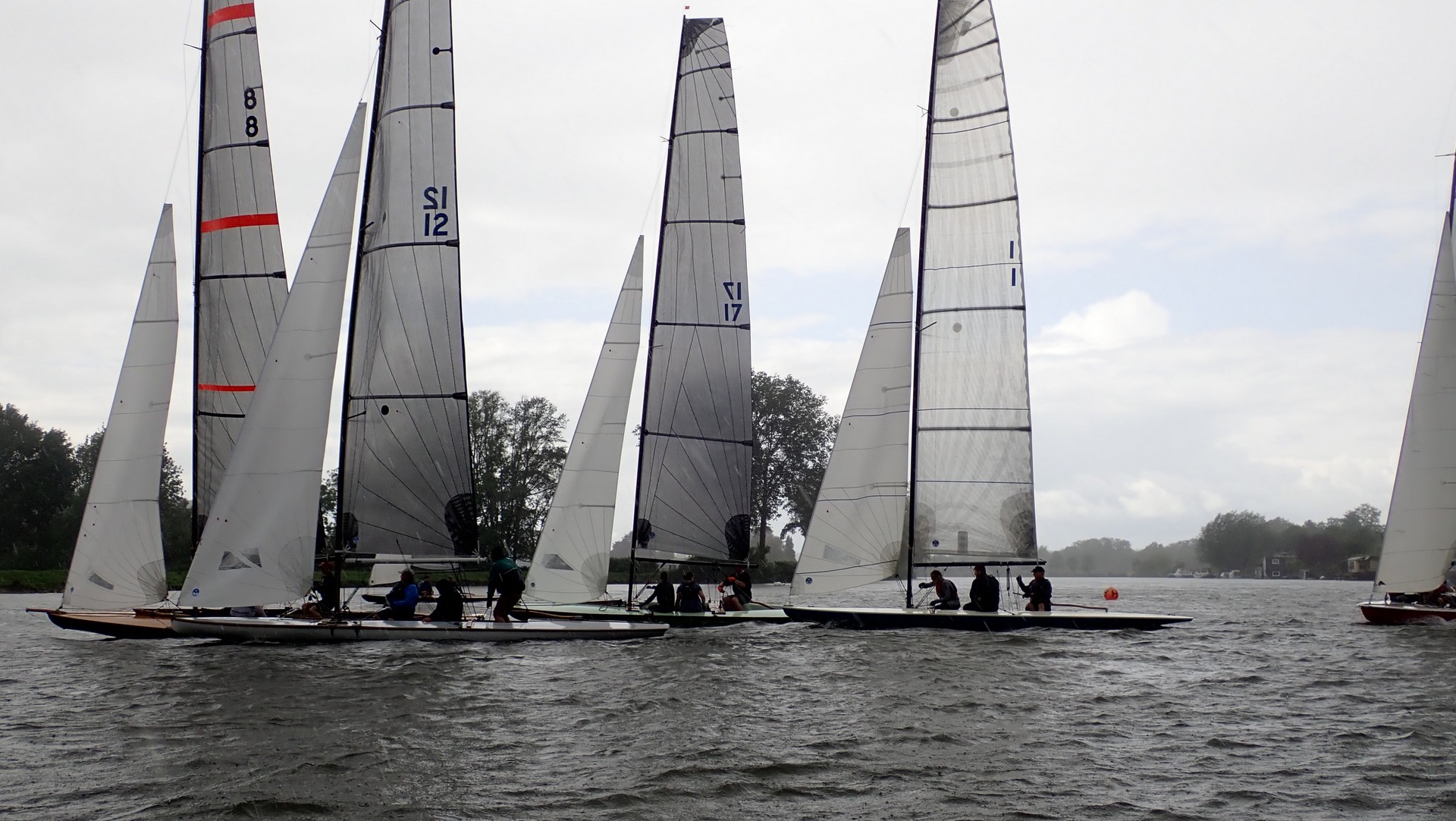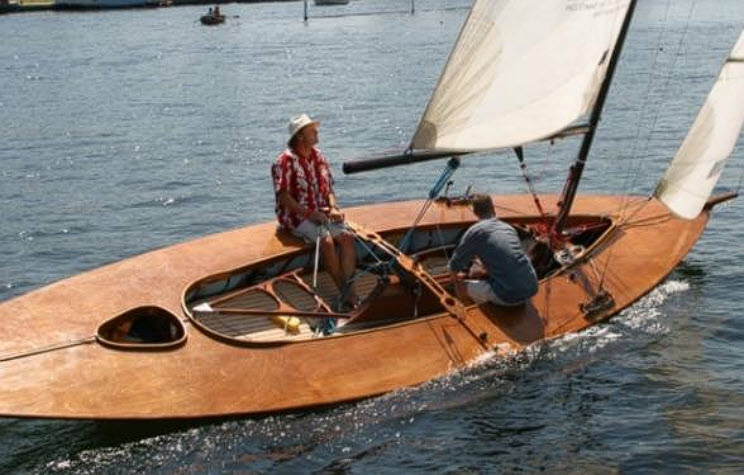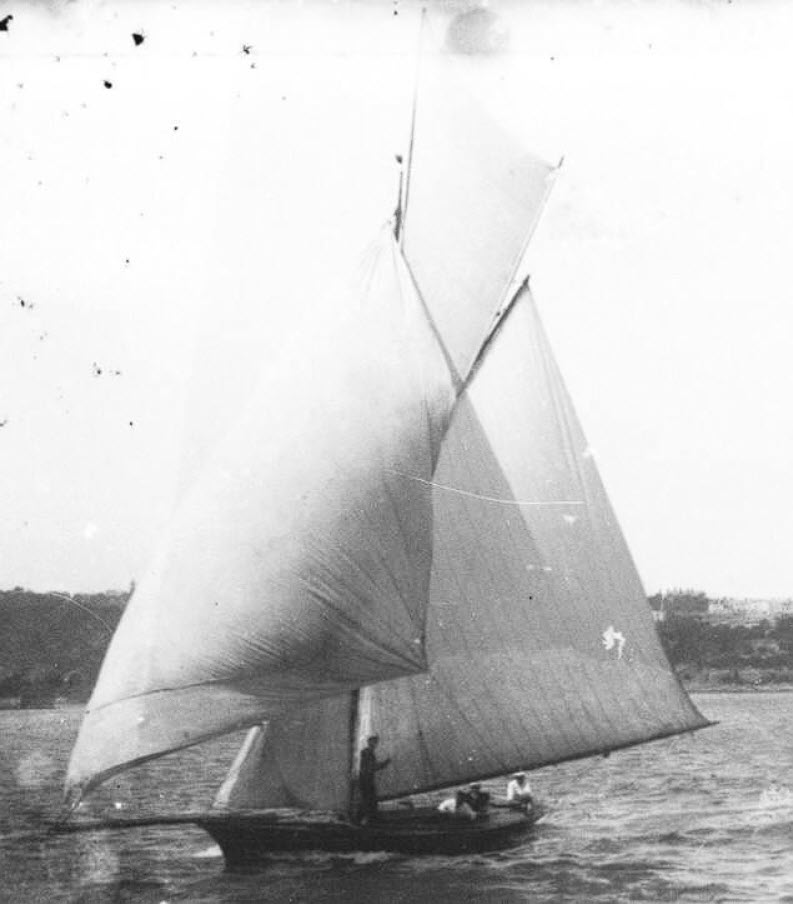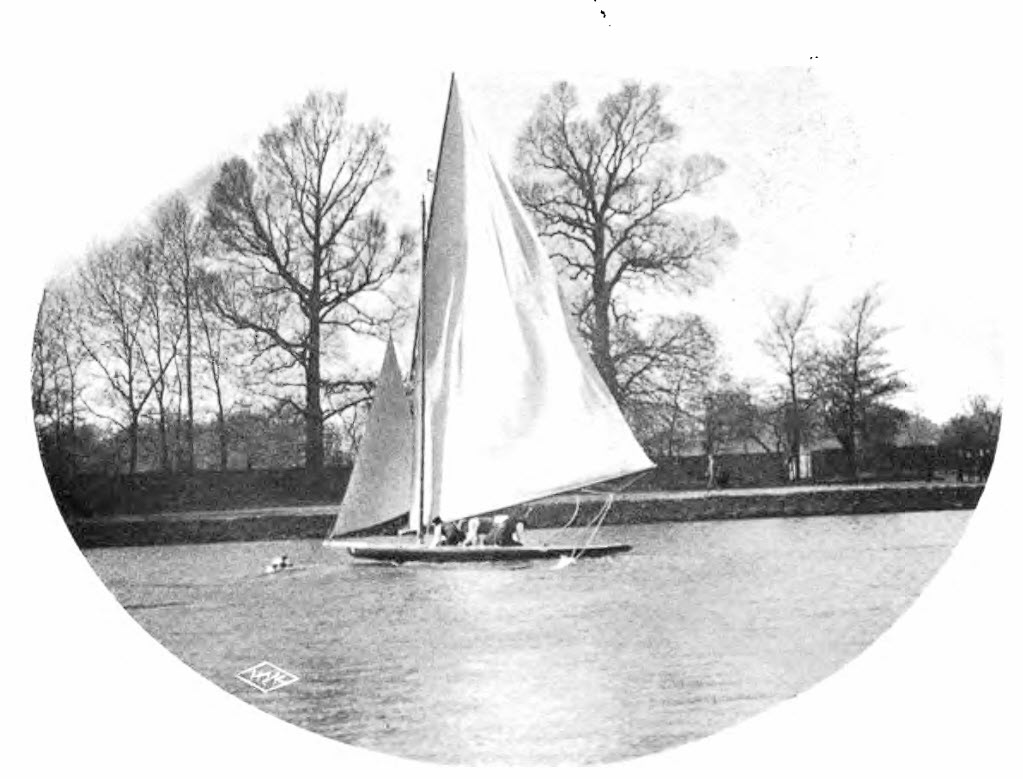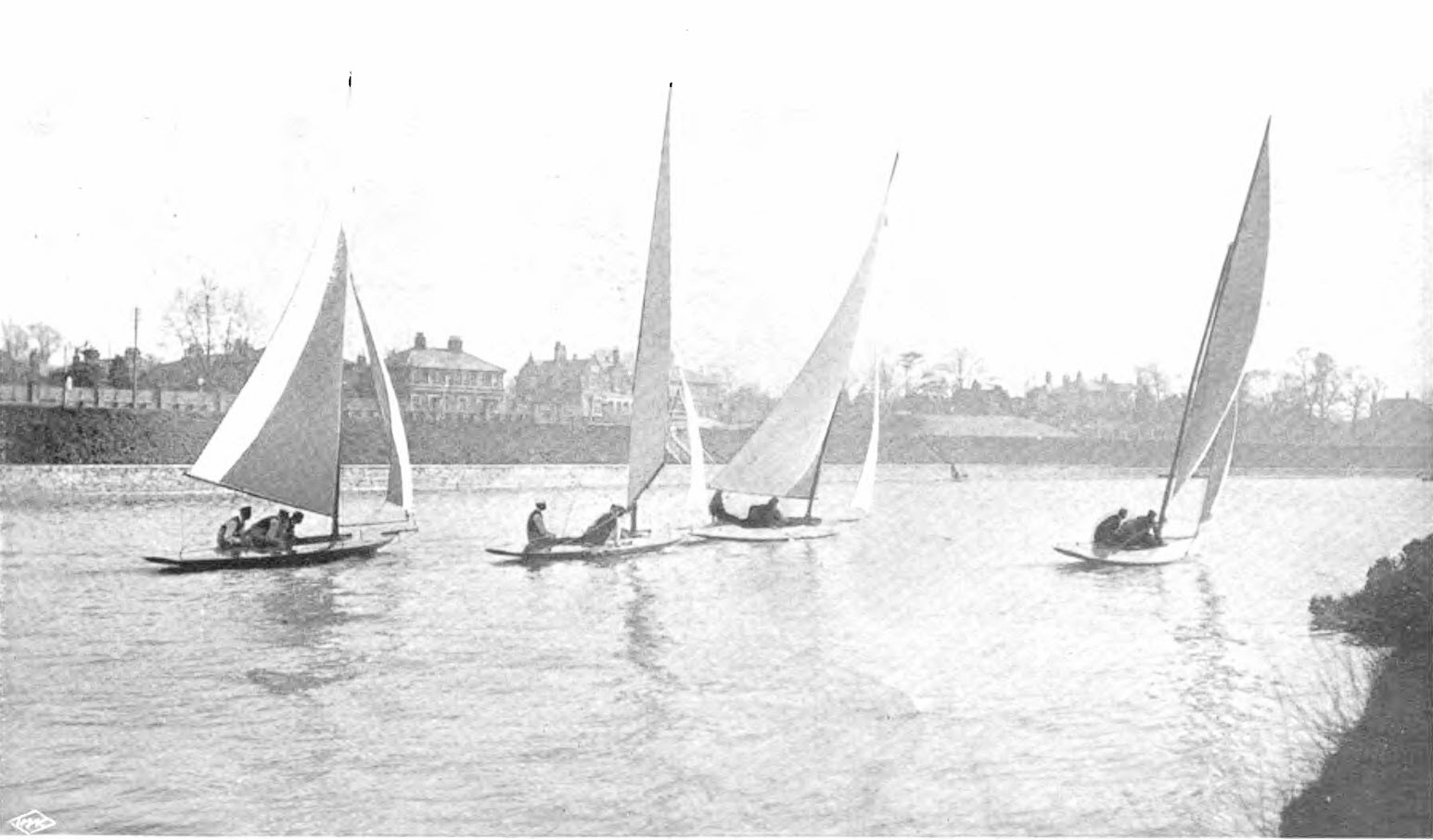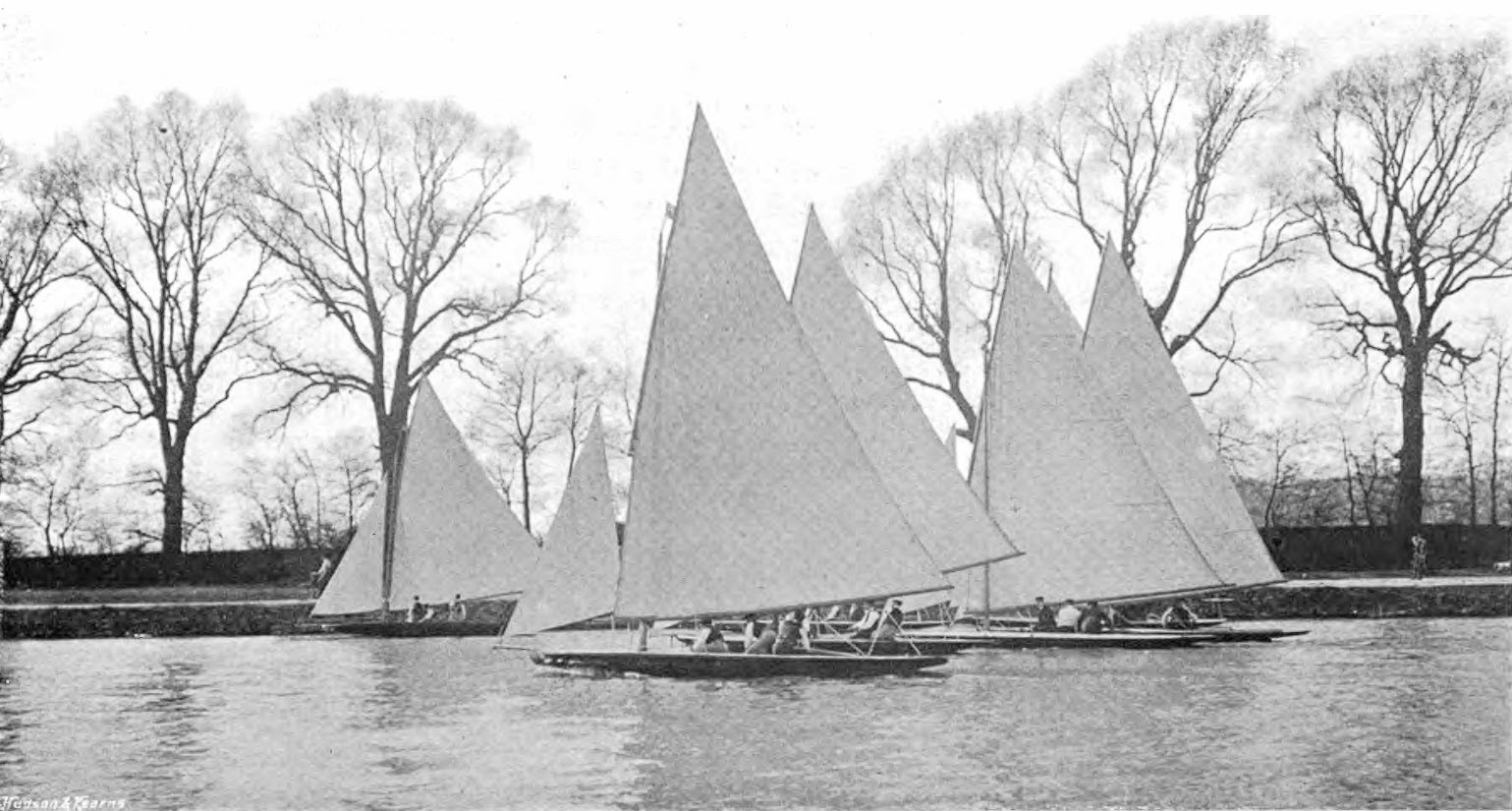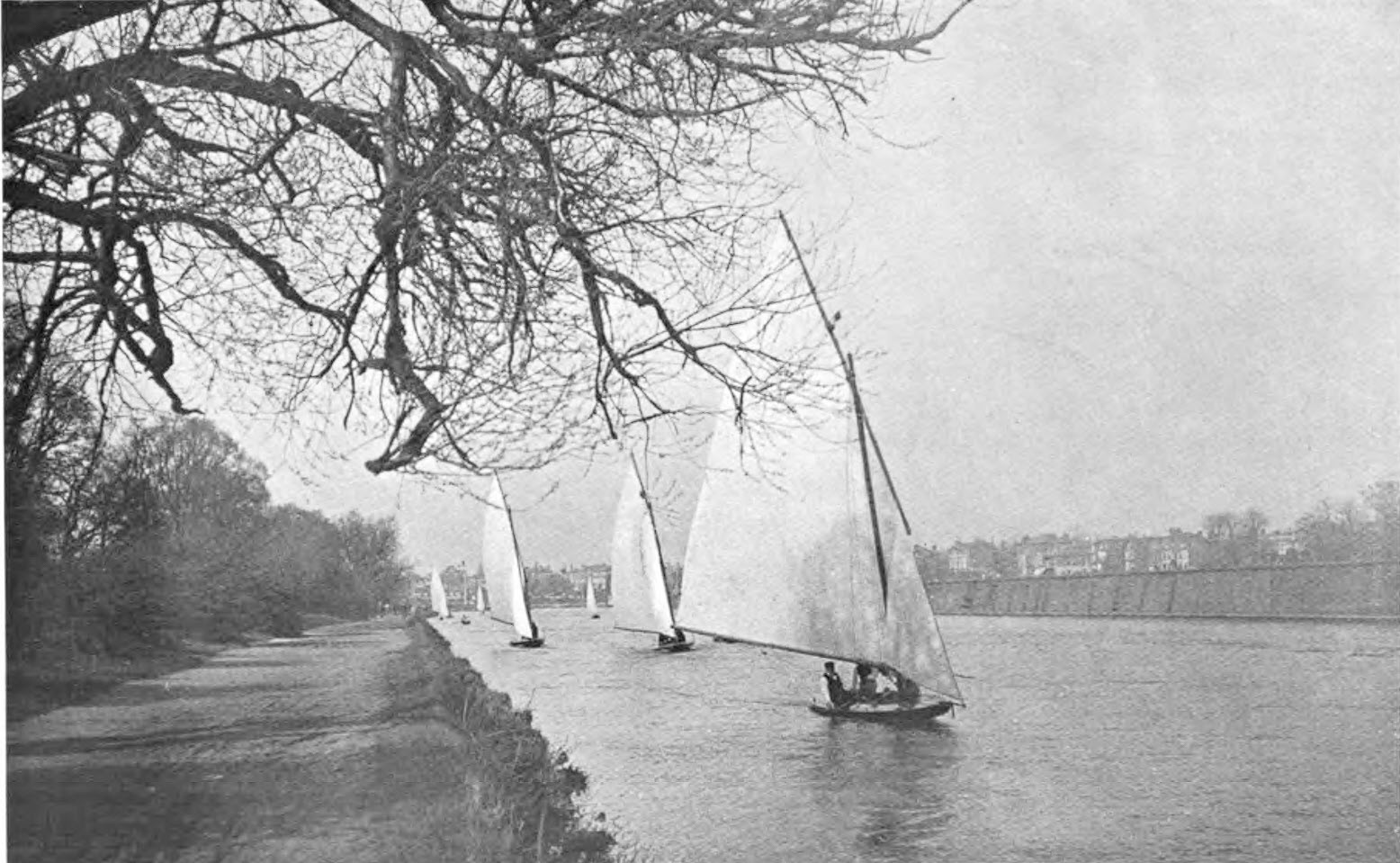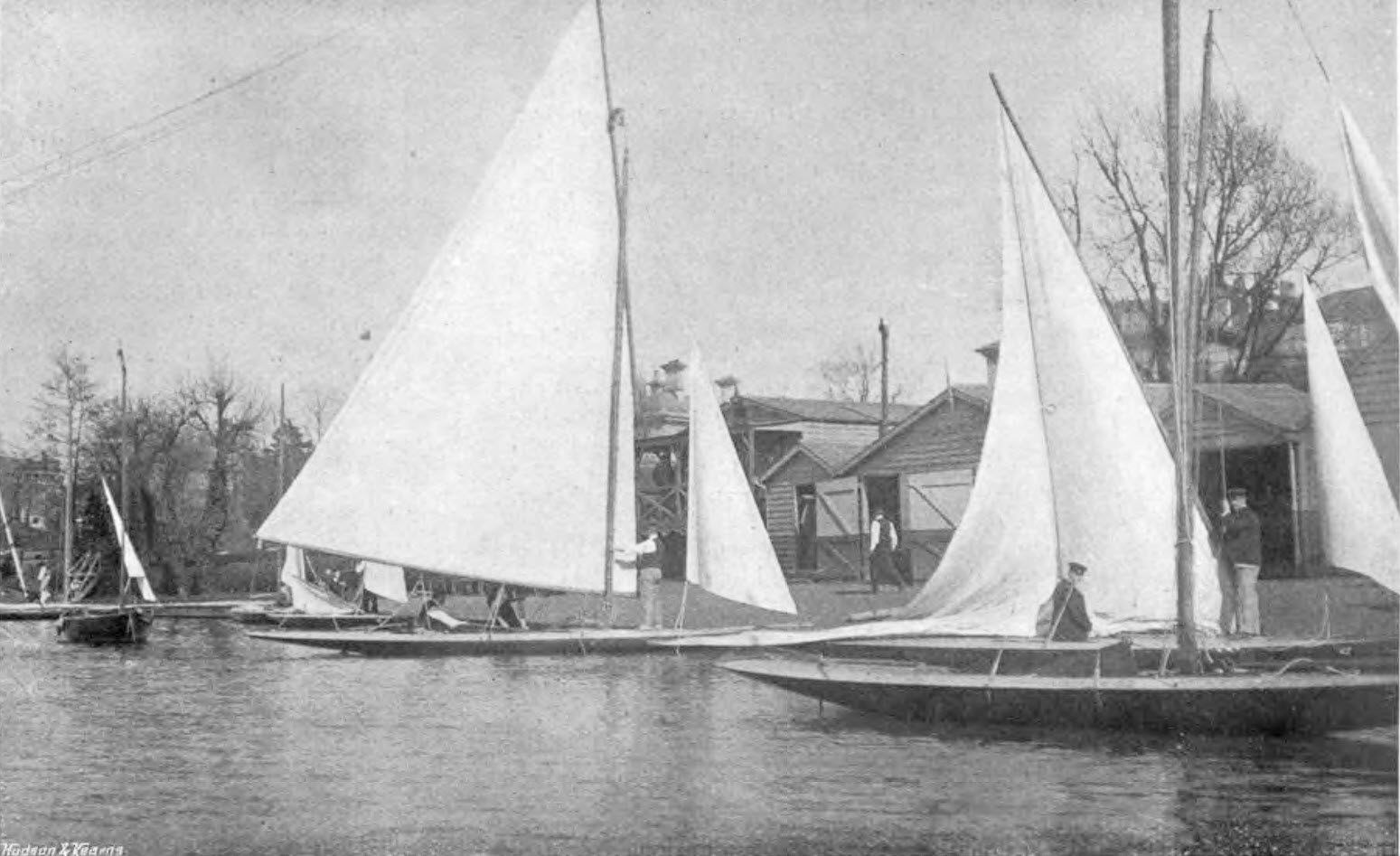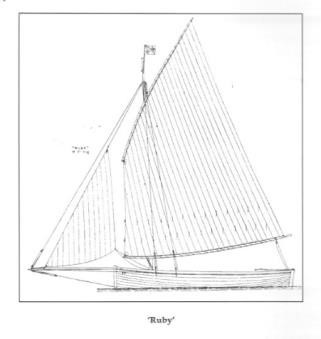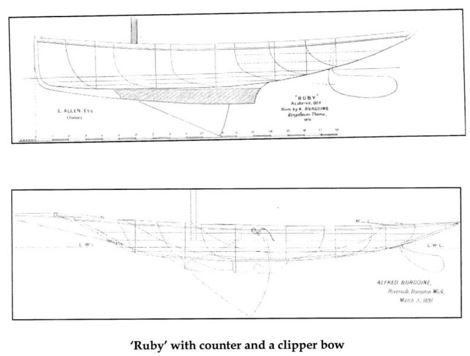Deep Research
Introduction: The Thames A-Rater is a legendary class of sailing dinghy that has graced the River Thames for over a century. With their long, narrow hulls and sky-scraping rigs (often 40–45 feet tall), these boats were purpose-built to excel in the sheltered, winding reaches of the upper Thames. Since their inception in the late 19th century, A-Raters have continually evolved – from wooden “skimming dishes” to modern carbon-fibre craft – while retaining an aura of elegance and an unrivaled turn of speed on inland waters. This engaging history traces the Thames A-Rater’s journey from Victorian novelty to 21st-century icon, highlighting the people, clubs, and innovations that have shaped its enduring story.
The story begins in Victorian Britain, where the idea of small-boat racing on rivers was just taking hold. In 1870, a group of enthusiasts founded the Thames Sailing Club (TSC) in Surbiton, Surrey, making it one of Britain’s first inland sailing clubs publications.aston.ac.uk. Early regattas on the Thames featured a motley fleet – from 14-foot dinghies to 30-ton yachts – all competing together under few rulesthames-sailingclub-history.thecomputerguy-it.co.uk thames-sailingclub-history.thecomputerguy-it.co.uk. This chaotic start soon highlighted the need for standardized racing rules and classes. The Yacht Racing Association (YRA) was formed in 1875 to create uniform rules (initially focused on seagoing yachts), and by 1887 the river clubs banded together in a Sailing Boat Association (SBA) to craft rules suited to smaller inland boatsthames-sailingclub-history.thecomputerguy-it.co.uk publications.aston.ac.uk.
A pivotal change came with the YRA’s new “rating rule” in 1886–1887. This rule defined a yacht’s rating as a function of its waterline length and sail area: Rating = (LWL × Sail Area) / 6000 raterassociation.co.uk publications.aston.ac.uk. It replaced an older rule that had penalized wide beams and inadvertently encouraged extremely narrow “plank-on-edge” yachts of dubious stabilityraterassociation.co.uk. Under the new formula, designers had freedom to innovate with hull shape, rig, and construction so long as they balanced length and sail area to achieve a desired ratingraterassociation.co.uk. The term “Rater” was born – a boat rating 1.0 was a One-Rater, 0.5 a Half-Rater, etc. – and racing classes were defined by these ratingspublications.aston.ac.uk. On the sea, one could find ½, 1, 2½, 5, 10, 20, even 40-Raters (the largest carrying a crew of 11 plus cook and steward!)raterassociation.co.uk. But on the Thames, a more modest scale prevailed. The SBA decreed in 1900 that boats rating between 0.75 and 1.0 (sailed by three crew) would form the Thames A-Rater class, while smaller 0.4–0.75 rated boats (two crew) became B-Raters raterassociation.co.uk. Boats above 1.0 rating were simply too large for river use and were excluded. raterassociation.co.uk.
Jenny Wren 1889 21/2 Rater Too Big for the Thames
In practice, the earliest Thames A-Raters emerged around 1887–1888, spurred by the newfound ability for clubs to compete on equal terms. In 1887, the Upper Thames Sailing Club (UTSC) – founded in 1884 at Maidenhead yachtinghistorians.org – organized the first Bourne End Week regatta to celebrate Queen Victoria’s Golden Jubilee sail-world.com. This annual late-May event at Bourne End (on the Thames in Buckinghamshire) quickly became a fixture of the social season, mentioned in the same breath as Henley Royal Regatta and Cowes Weekthedailysail.com. Genteel society would picnic along the banks as the new A-Raters showed off their prowess. In 1893, Queen Victoria herself added prestige by donating a silver trophy – the Queen’s Cup – to be awarded to the top A-Rater at Bourne End Weeksail-world.com. The royal patronage (her son, the Duke of Connaught, was UTSC’s President) and the sight of these elegant 25–28 ft boats with towering sails made A-Rater racing a sensationsail-world.com. As one contemporary writer noted, the Thames A-Raters were “living history, a direct link with the dawn of competitive small boat sailing in Britain”, raced just as enthusiastically in Victorian times as they are today. thamessailingclub.co.uk. Sailing was very different in the late 1800’s as compared with club racing today. A club became established but might hold only a few races on its own waters or organise races on different waters and boats could travel anywhere between Oxford and Twickenham for a race.
Excerpt from Country Life Illustrated April 27th 1901
"At last one got to the river
and envied—in a sort of way—
the men who were responsible
for what was to happen after
wards.
For the man who
knows how to manage a sailing
boat is a very happy person.
Everyone who is capable of
activity has his own opinion as
to which is the best of all sports.
We should be extremely sorry
if there did not exist this great
diversity of opinion. Yet for
the moment, at any rate, we are inclined to think that the man who can sail a boat is about the happiest of all.
The boat is wood and steel, supplemented by canvas. When
it gets into the hands of the man who understands it, it
becomes something like a living
creature, gifted with the highest
intelligence. The greater the
difficulties to be encountered
the better is the man able to
materialise his will. The least
touch of his hand enables his
boat to make a point at the
expense of a rival which is
directed by a man less skilful
than he. There is, in fact, no
quality which he cannot bring
into play. Caution counts for
a great deal, and impudent
daring for just as much.
Lying in the bows, one
realises all these facts. Also
one is conscious that the blue
sky is reflected in waters
pleasantly broken by the warm
wind that is blowing ; and that
it is good, on Saturdays, to
have won to a position where
no one can by any possibility
come to demand that one
should work.
But, to refer in detail to
the events of Saturday which
are illustrated, and with which
we are particularly concerned,
it
may be considered that,
although enjoying to the full
the brilliant sunshine and
blue skies, the competitors
who took part in the matches
of the Thames Sailing Club at
Surbiton could have wished
for a little better winds than
those with which they were
favoured.
All the same, a
capital day's sport was enjoyed,
and the events were made the
more interesting by the first
appearance of Mr. Paul L.
Waterlow's new boat Alannah,
which proved herself to have
realised her owner's expectations, and was certainly a very fine and fast craft. For the
first event, the Dunnage Challenge Cup and a prize of five guineas, both presented by
Messrs. Jackson, eight competitors listened for the judge's horn the principal among them being the now veteran prize
winner Ulva, a boat very much like the Alannah, and captained
by her owner, Mr. T. Foster
Knowles ; Mr. Clarke's new
boat Alskling ; and Latona,
sailed by Mr. J. F. Storey.
The remaining craft were
Elsie (Mr. W. H. Wheeler),
Vera (Mr. E. E. Cook), Medje
(Mr. C. P. Gosnell), and
Yvonne (Mr. E. M. Bond).
The match, which was over
the eight miles of the long
course at Surbiton, was started
directly after eleven o'clock,
and was a very close one.
Vera led, with Alskling,
Alannah, and the others close
up. Unluckily, just before the
start Ulva carried away the
lacing of the mainsail on the
luff of her yard, and was
obliged to lower her canvas and
repair damages. Meanwhile,
she followed the fleet up the
reach under the peak of her
sail and foresail. The E.S.E.
breeze made it a reach both
ways, and in the first round Alannah got the weather berth,
with Alskling close under her lee.
Alannah
Latona was third round the
lower mark buoy, a position
she held until the third round,
when Elsie passed her. Ulva,
whose lacing gave out again,
retired after attempting the
fourth round. A very close
race was finished in the following order, only 14sec. dividing
Alannah and Alskling past the
home mark :
Alannah, Mr. Paul L. VVaterlow,
winner, 12hr. 30min. 35sec.
Alskling, Messrs. Clarke and Suobohm second prize 12hr 30min 49 sec
Elsie, Mr. W. H. Wheeler, third prize, 12hr. 34min. 9sec.
Latona, Mr. J. F. Storey, 12hr.
35minn. l0sec.
Vera, Mr. E. E. Cook, 12hr. 38min.
59sec.
Yvonne, Mr. E. M. Bond, 12hr.
42min. 10sec.
Medje and Ulva retired
The prize presented by the
commodore, Mr. T. S. Field,
brought out the same number
of competitors in the afternoon
at three o'clock, the only difference in the composition of
the fleets being that Medje
retired, and Mr. M. Browne's Merrythought took her place. Elsie led over the line, with Alannah close up. Ulva and Vera followed together, and Yvonne
fourth.
Except that Elsie did not seem quite so well suited,
and began to drop to leeward, for the first three rounds the
race was a repetition of the morning match. In the fourth round,
however, Ulva took the second berth, whilst the rest of the
fleet, with the exception of Alskling, were left rather in the rear.
The rear-commodore, Mr. Paul L. Waterlow, had the pleasure
of winning his second race for the day, and it seems likely that
these initial performances of his new boat will be repeated
through the season. The times of the second match are given
below :
Alannah, 1.0, Mr. Paul ].. Waterlow, winner, 4hr. 35min 36sec.
Ulva, 1.0, Mr. T. K. Knowles, second prize, 4hr. 37mm. 33sec.
Alskling,1.0, Messrs. Clarke and Suobohm, third prize, 4hr. 3Smin. 13sec.
Latona, 0.80, Mr. J. F. Storey, 4hr. 50min. 0sec.
Merrythought, 0.85, Mr. M. Browne, 4hr. 50min. 35sec.
Elsie, Vera, and Yvonne retired, the latter having fouled a mark."
The earliest of the Thames Raters included boats like Ruby, shown here in her original 1870 design. By 1888, she had undergone a significant transformation: an extended stern added six feet to her length, as illustrated in the second drawing.
The lower image highlights a further modification to her bow, designed to increase her effective waterline length when heeled over. From her modest beginnings at 18 feet, Ruby evolved into a sleek 28-foot 6-inch racer, with an additional 4-foot bowsprit.
One particularly interesting detail from the middle drawing is the inclusion of both a fixed weighted keel (shown shaded) and a lifting centreplate – a clever combination that allowed her to perform well in the shallower waters of the Thames. In her racing days, Ruby proved her worth, claiming several victories on the river.
Some of the early Raters included names like
Ruby, Alannah, Elsie, Alskling, Latona (Vanessa), Vera, Medje, Yvonne, Merrythought, Sorceress, Folly, Mona and Challenge. Some of these took part in the first Queen Cup Race in 1893.

